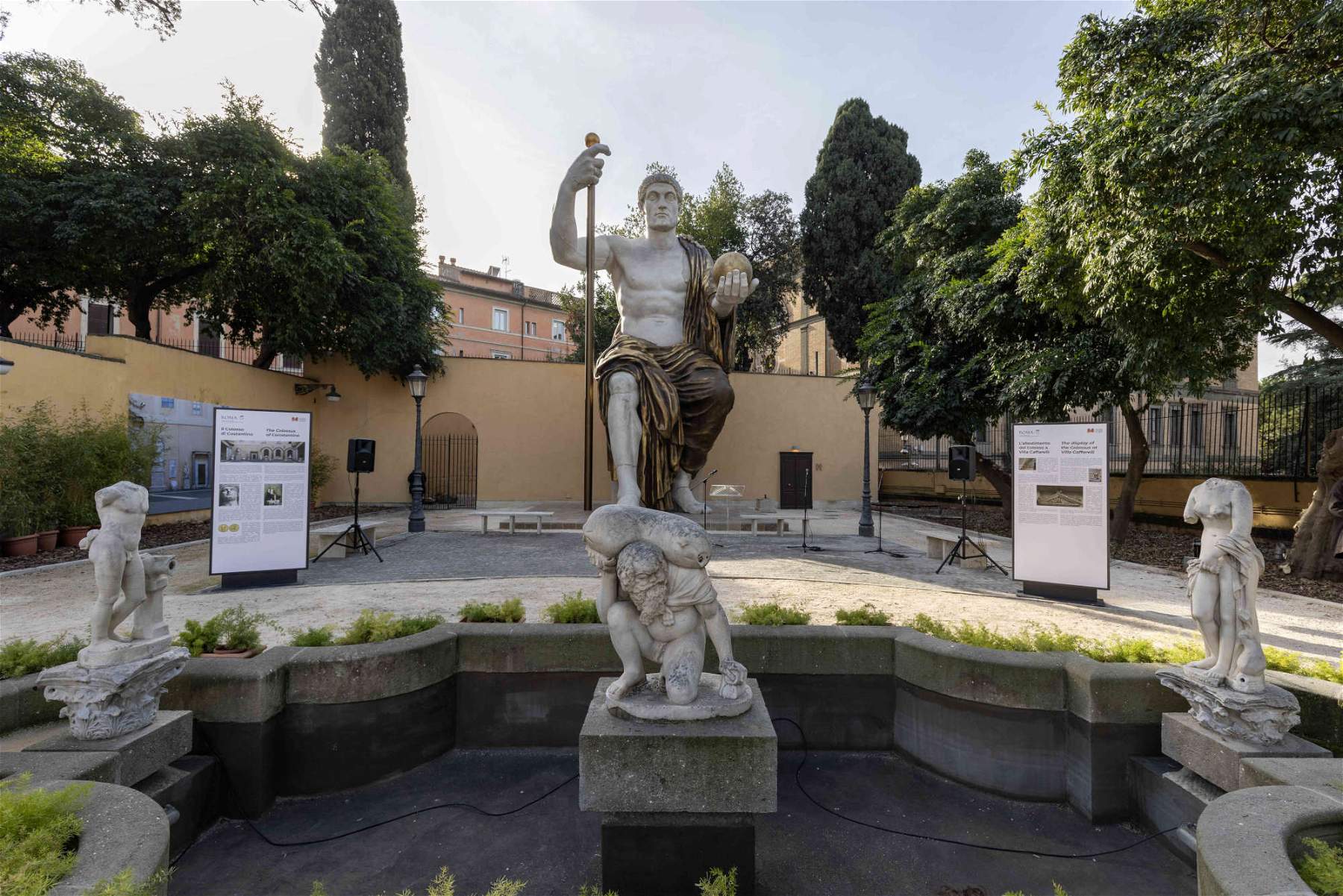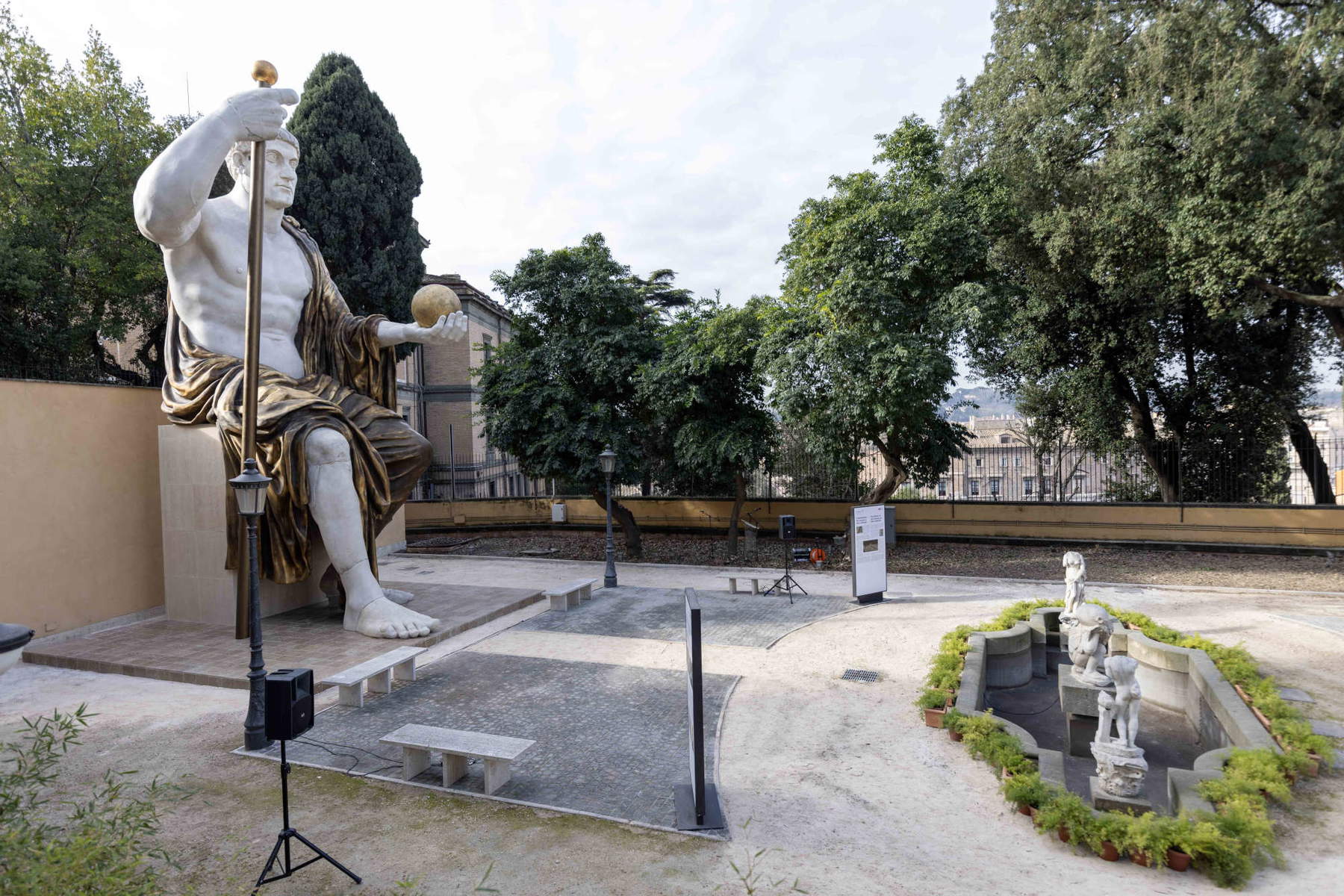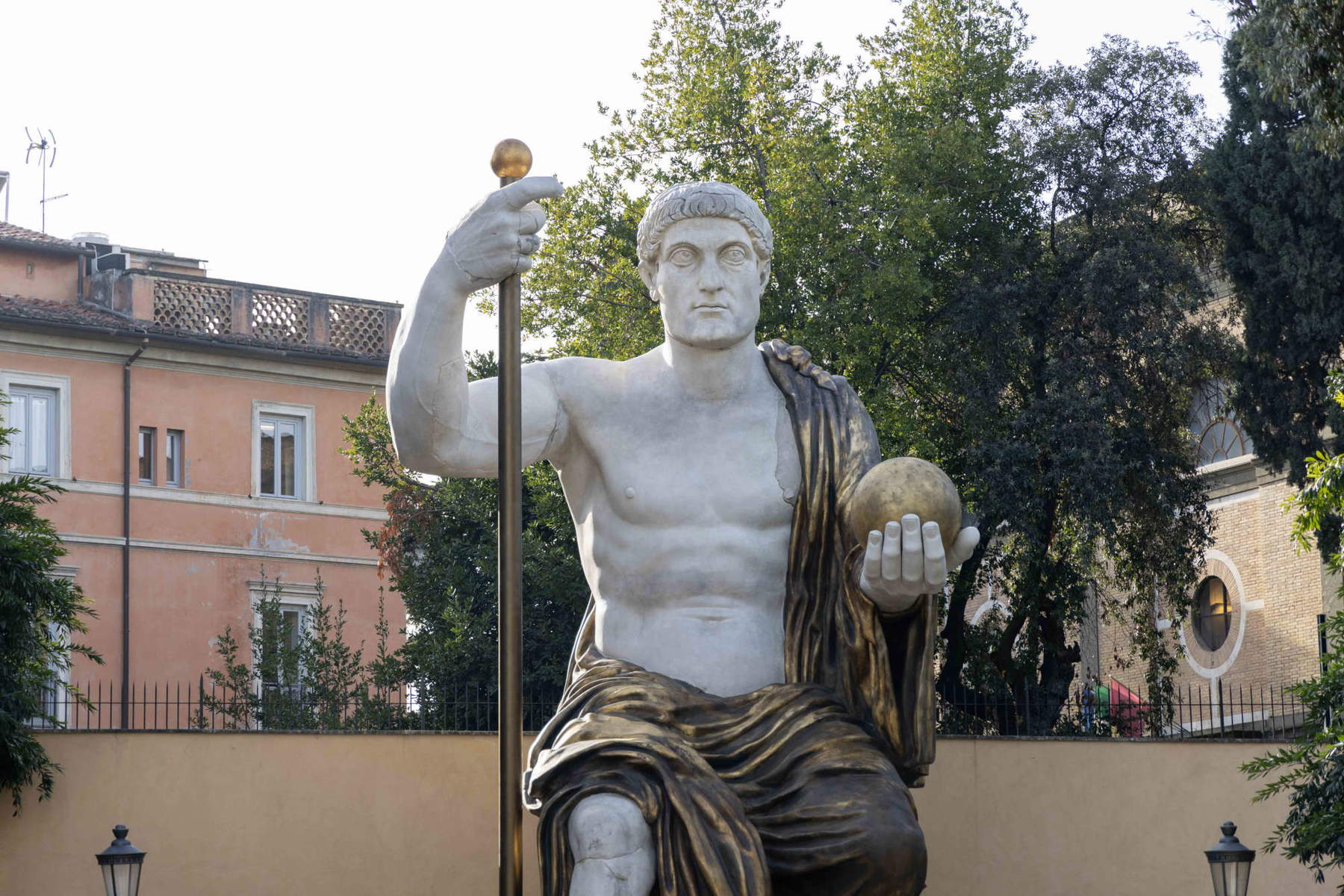Presented in Rome is the life-size reconstruction of the Colossus of Constantine, which we had reported on in recent days. The work, thirteen meters high, offers a reconstruction of the great statue rediscovered, in fragments, in 1486 at the Basilica of Maxentius. The fragments (head, right arm, wrist, right hand, right knee, right shin, right foot, left foot) are now in the courtyard of the Palazzo dei Conservatori at the Capitoline Museums, while the reconstruction will now be visible just behind the Palazzo, in the Villa Caffarelli Garden.
It is a 1:1 scale reconstruction that is the result of a collaboration between the Capitoline Superintendency, Fondazione Prada and Factum Foundation for Digital Technology in Preservation under the scientific supervision of Claudio Parisi Presicce, Capitoline Superintendent of Cultural Heritage. The replica of the monument was presented to the public by the Mayor of Roma Capitale Roberto Gualtieri, Roma Capitale’s Councillor for Culture Miguel Gotor, Superintendent Claudio Parisi Presicce, Fondazione Prada Steering Committee member Salvatore Settis, and Adam Lowe of the Factum Foundation for Digital Technology in Preservation. The project is promoted by Roma Capitale, Assessorato alla Cultura, Sovrintendenza Capitolina ai Beni Culturali and realized in collaboration with Fondazione Prada, which first presented the work in Milan from November 17, 2022 to February 27, 2023, on the occasion of the exhibition Recycling Beauty curated by Salvatore Settis and Anna Anguissola with Denise La Monica.
The Garden of Villa Caffarelli, where the reproduction of the Colossus of Constantine has been placed, insists in part on the area occupied by the Temple of Jupiter Optimus Maximus, which once housed the statue of Jupiter, the same one perhaps from which the Colossus was derived or at any rate constituting its derivation model. The remains of the temple are visible today inside the Exedra of Marcus Aurelius. “In Rome,” the mayor explained, “we are trying to recover the dimensions of antiquity and our knowledge and perception of the masterpieces of the past, of which we preserve traces and fragments. We did it a short time ago with the Museum of the Forma Urbis, we do it by going deep with the excavations of the Underground, we do it through the anastylosis of the Basilica Ulpia and now by making this colossal statue usable by everyone, both to be admired in itself and to be a gateway to the treasure chest that is the Capitoline Hill and that are the Capitoline Museums. I really want to thank everyone who has made this creation and this reconstruction possible, which helps to give us a better understanding of the past and therefore a better understanding of who we are.”
At the end of March 2022, a team from the Factum Foundation spent three days in the courtyard of the Capitoline Museums to scan the fragments there using the technique of photogrammetry.
Each fragment was modeled in 3-D and placed on the digital body of the statue created using other Imperial-era cult statues in similar poses as iconographic examples, including the colossal statue of Jupiter (1st century AD.) preserved at the State Hermitage Museum in St. Petersburg, probably inspired by the Zeus of Olympia by Phidias, and the large plaster copy of the statue of Emperor Claudius, portrayed as Jupiter, housed at the Ara Pacis Museum. The complex reconstruction operation carried out by Factum took into account multiple factors: the type of marble of the original parts, the restorations and additions; the details of the missing drapery and the appearance of the gilded bronze of which it was composed; the relationship between the reconstruction and the surviving fragments, the condition of these and their exact location. After finalizing the very high-resolution 3D model, the material reconstruction of the Colossus was then carried out. Resin and polyurethane, along with marble powder, gold leaf and plaster, were chosen as materials to render the textural surfaces of marble and bronze, while an easily assembled and removable aluminum support was used for the internal structure (originally perhaps composed of bricks, wood and metal bars).
Here, then, as of today the reconstructed colossus is visible to all.
 Reconstruction of the
Reconstruction of the Reconstruction of the Colossus of
Reconstruction of the Colossus of Reconstruction of the Colossus of
Reconstruction of the Colossus of Reconstruction of the Colossus of
Reconstruction of the Colossus of Reconstruction of the Colossus of
Reconstruction of the Colossus of
 |
| Rome, reconstruction of the Colossus of Constantine unveiled. Photos |
Warning: the translation into English of the original Italian article was created using automatic tools. We undertake to review all articles, but we do not guarantee the total absence of inaccuracies in the translation due to the program. You can find the original by clicking on the ITA button. If you find any mistake,please contact us.